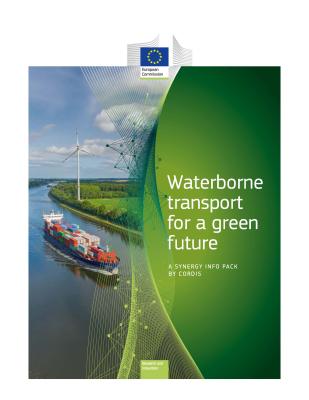Details
- Identification
- ISBN 978-92-78-44198-2, doi:10.2830/197331
- Publication date
- 5 June 2024
- Author
- European Climate, Infrastructure and Environment Executive Agency
Description
Waterborne transport is an economic powerhouse – responsible for 77 % of Europe’s external trade and 35 % of the trade happening between EU Member States. It’s also a remarkably efficient mode for getting around, especially compared to road transport. It is estimated that every tonne of freight transferred from road to water results in a four to fivefold reduction in emissions.
Yet the sector is responsible for 13.5 % of all transport-related greenhouse gas emissions in Europe. Although this is less than what’s produced by the road transport and aviation sectors (71 % and 14.4 % respectively), it is a substantial carbon footprint, which could increase as demand for shipping grows. Waterborne transport also emits other types of air pollution, including sulfur dioxide and particulates.
If Europe is to achieve its Green Deal objective of becoming the world’s first carbon-neutral continent, it must reduce waterborne transport’s environmental impact. But it must do so in a way that facilitates the growth of a modern and globally competitive shipping sector.
That’s a difficult balance to strike, but one that the 13 EU-funded research, innovation, implementation and infrastructure projects highlighted in a new Synergy Info Pack on Waterborne Transport are working to achieve.
Managed by CINEA, the projects come from different funding programmes, countries and sectors, but all share a commitment to making waterborne transport more sustainable, more efficient and more competitive.
Discover more on the CORDIS website!.

